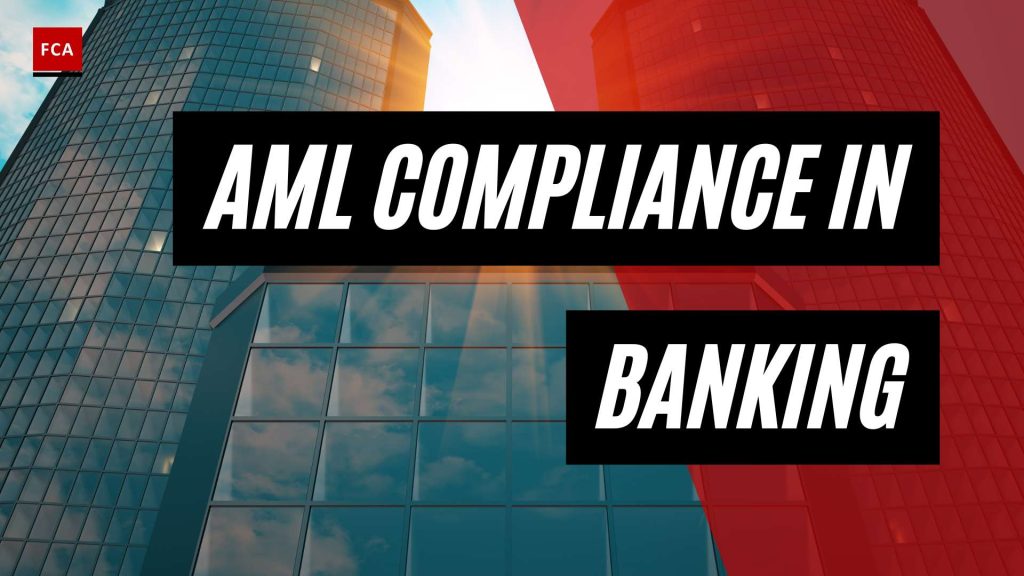AML Compliance in Banking: An Overview
To safeguard the integrity of the financial system and prevent illicit activities, Anti-Money Laundering (AML) compliance is of paramount importance in the banking industry. This section provides an overview of the significance of AML compliance in banking and the regulatory landscape and framework that governs it.
The Importance of AML Compliance in Banking
AML compliance in banking plays a vital role in combating money laundering, terrorism financing, and other financial crimes. By adhering to anti-money laundering regulations, banks protect themselves, their customers, and the broader financial system from the risks associated with illicit activities.
Effective AML compliance enables banks to:
-
Detect and prevent money laundering: Banks serve as gatekeepers in identifying and reporting suspicious transactions that may be indicative of money laundering. This helps law enforcement agencies investigate and disrupt illicit financial activities.
-
Safeguard the reputation and trust: Maintaining robust AML compliance measures enhances a bank’s reputation and fosters trust among customers, stakeholders, and regulators. It demonstrates the bank’s commitment to ethical practices and adherence to legal and regulatory obligations.
-
Mitigate legal and financial risks: Compliance failures can result in severe legal and financial penalties for banks. Non-compliance with AML regulations can lead to fines, sanctions, legal actions, and reputational damage. By implementing effective AML compliance measures, banks mitigate these risks.
-
Ensure a level playing field: AML compliance regulations create a level playing field for all banks, ensuring that financial institutions follow standardized procedures and guidelines to prevent illicit activities. This promotes fair competition and helps maintain the integrity of the banking industry.
Regulatory Landscape and Framework
The regulatory landscape surrounding AML compliance in banking is comprehensive and encompasses various laws, regulations, and guidelines. Regulatory bodies such as the Financial Crimes Enforcement Network (FinCEN) in the United States and similar organizations worldwide set forth the standards and requirements that banks must adhere to.
In the United States, the Bank Secrecy Act (BSA) serves as the cornerstone of AML compliance for banks. Administered by FinCEN, the BSA requires banks to implement robust AML programs, conduct customer due diligence, monitor transactions, and report suspicious activities. The BSA is complemented by additional regulations, such as the USA PATRIOT Act, which provides expanded tools and resources to combat money laundering and terrorism financing.
Internationally, organizations like the Financial Action Task Force (FATF) play a significant role in setting global standards for AML compliance. The FATF’s recommendations, widely adopted by countries worldwide, provide a framework for AML regulations and encourage international cooperation in combating money laundering and terrorist financing.
Banks must stay abreast of evolving AML regulations and guidelines issued by regulatory bodies. They should regularly review their AML policies and procedures, ensuring they align with the latest requirements. It is also essential for banks to maintain effective communication with regulatory authorities and participate in industry-wide initiatives to exchange best practices and combat financial crimes collectively.
By understanding the importance of AML compliance in banking and the regulatory landscape in which they operate, banks can establish robust AML programs, implement necessary controls, and contribute to a safer and more secure financial system.
Key Components of AML Compliance in Banking
To ensure the integrity of the financial system and combat money laundering, banks must establish robust anti-money laundering (AML) compliance measures. These measures consist of several key components that work together to identify, prevent, and report suspicious activities. The key components of AML compliance in banking include Know Your Customer (KYC) procedures, transaction monitoring and reporting, and risk assessment and management.
Know Your Customer (KYC) Procedures
KYC procedures are an essential part of AML compliance in banking. Banks are required to verify the identity of their customers and understand the nature of their financial activities. KYC procedures involve collecting and verifying customer information, including identification documents, proof of address, and other relevant details.
By implementing rigorous KYC procedures, banks can establish a baseline understanding of their customers and their financial behavior. This enables them to identify any inconsistencies or suspicious activities that may indicate potential money laundering or other illicit financial activities. Effective KYC procedures also assist in the detection of politically exposed persons (PEPs) and individuals or entities on sanctions lists.
Transaction Monitoring and Reporting
Transaction monitoring and reporting are crucial components of AML compliance in banking. Banks are required to monitor customer transactions to identify any unusual or suspicious activities. This is done through the use of sophisticated software systems that analyze transactional data and detect patterns or anomalies that may indicate money laundering or other illicit activities.
When banks identify transactions that raise suspicions, they are obligated to report them to the appropriate authorities. Reporting suspicious transactions is a legal requirement aimed at assisting law enforcement efforts in targeting money laundering, terrorist financing, and other financial crimes. Banks must file Suspicious Activity Reports (SARs) and provide detailed information about the transactions and any red flags observed.
Risk Assessment and Management
Risk assessment and management play a vital role in AML compliance in banking. Banks are required to conduct thorough risk assessments to identify and understand the specific risks they face in terms of money laundering and terrorist financing. This involves assessing the inherent risks associated with their customers, products, services, and geographic locations.
Based on the risk assessment, banks develop risk management strategies and implement appropriate controls to mitigate these risks. This may include enhanced due diligence for high-risk customers, ongoing monitoring of customer relationships, and the implementation of transaction limits or restrictions. Regular risk assessments help banks stay proactive in identifying emerging risks and adapting their AML compliance measures accordingly.
By incorporating these key components into their AML compliance programs, banks can establish a strong defense against money laundering and other financial crimes. It is essential for banks to stay up-to-date with anti-money laundering regulations for banks, implement effective AML policies for financial institutions, and provide AML training for bank employees to ensure compliance and protect the integrity of the financial system.
Best Practices for AML Compliance in Banking
To ensure effective anti-money laundering (AML) compliance in the banking industry, financial institutions must implement robust practices and procedures. By following best practices, banks can mitigate the risk of money laundering activities and maintain the integrity of the financial system. Here are three key best practices for AML compliance in banking:
Implementing Effective AML Programs
Financial institutions should establish comprehensive AML programs that encompass policies, procedures, and controls designed to detect and prevent money laundering. These programs should be tailored to the specific risks faced by the bank, taking into account factors such as customer base, products and services offered, and geographic locations served.
The program should begin with a thorough understanding of the bank’s customers through Know Your Customer (KYC) procedures. This involves verifying the identity of customers, assessing their risk profiles, and conducting ongoing monitoring of their transactions to detect any suspicious activities.
Transaction monitoring and reporting play a crucial role in AML compliance. Banks should implement robust systems and processes to identify and analyze potentially suspicious transactions. By regularly reviewing transaction reports, banks can identify red flags and promptly report any suspicious activities to the appropriate authorities (FFIEC).
Additionally, conducting regular risk assessments can help banks identify and quantify the inherent risks associated with their products, services, and customer base. This allows for the implementation of appropriate controls and measures to mitigate those risks effectively.
Utilizing Technology and Data Analytics
In today’s digital age, banks can leverage technological advancements and data analytics to enhance AML compliance efforts. AML software solutions, such as transaction monitoring systems and screening tools, can automate the detection of suspicious activities and reduce the risk of human error. These systems can analyze large volumes of data, flagging potentially suspicious transactions for further investigation.
By utilizing artificial intelligence (AI) and machine learning algorithms, banks can improve the accuracy and efficiency of their AML programs. These technologies can continuously learn from patterns and trends in transaction data, enabling banks to adapt their detection models and stay ahead of evolving money laundering techniques.
Conducting Regular Training and Education
A well-informed and educated workforce is essential for effective AML compliance in banking. Banks should provide regular training and education programs to employees, ensuring they are aware of their responsibilities and the latest AML regulations and requirements. This includes training on recognizing common red flags for money laundering and suspicious transactions.
Training programs should cover topics such as customer due diligence, transaction monitoring, and reporting obligations. Banks should also promote a culture of compliance by encouraging employees to report any suspicions or concerns regarding potential money laundering activities.
By conducting regular training and education, banks can enhance the knowledge and awareness of their employees, empowering them to play an active role in preventing money laundering.
By implementing these best practices, banks can strengthen their AML compliance efforts and contribute to the overall integrity of the financial system. However, it’s important to note that AML compliance is an ongoing process that requires continuous monitoring, evaluation, and adaptation to keep pace with evolving money laundering techniques. Regular audits and assessments, such as AML audits, can help banks identify areas for improvement and ensure compliance with anti-money laundering regulations.
Red Flags and Suspicious Activities in AML Compliance
Ensuring AML compliance in banking requires vigilant monitoring for red flags and suspicious activities that may indicate potential money laundering or terrorist financing. Recognizing these indicators is crucial for banks to fulfill their regulatory obligations and protect the integrity of the financial system. In this section, we will explore common red flags for money laundering, recognizing suspicious transactions, and dealing with high-risk customers.
Common Red Flags for Money Laundering
Red flags are indicators that suggest an individual or business may pose a higher risk of engaging in money laundering or other illicit financial activities. While the presence of a red flag does not automatically indicate criminal activity, it warrants additional scrutiny to assess whether the activity is suspicious or without a reasonable business or legal purpose (BSA/AML Manual – Appendices). Here are some common red flags to watch out for:
-
Unusual Transactions: Large cash deposits or withdrawals, frequent transactions just below reporting thresholds, and structuring transactions to avoid reporting requirements can be indicative of money laundering attempts.
-
Rapid Movement of Funds: Transferring funds through multiple accounts or jurisdictions within a short period can suggest an attempt to obscure the origin or destination of the funds.
-
Mismatched Transactions: Transactions that are inconsistent with the customer’s profile, such as sudden high-value transactions by an account with limited activity, may raise suspicions.
-
Unusual Business Activities: Unexplained changes in a customer’s business model, sudden shifts to high-risk industries, or involvement in complex transactions without clear economic purpose can be red flags.
-
Politically Exposed Persons (PEPs): Dealing with individuals who hold prominent public positions, their family members, or close associates requires enhanced due diligence due to the potential risk of corruption or illicit funds.
It’s important to note that this list is not exhaustive, and banks should tailor their red flag detection processes to their specific risk profiles. For a more comprehensive understanding of red flags and suspicious activities, consult the BSA/AML Manual – Appendices provided by the Financial Crimes Enforcement Network (FinCEN).
Recognizing Suspicious Transactions
Management’s focus should be on reporting suspicious activities rather than determining whether transactions are specifically linked to money laundering or terrorist financing. While banks are encouraged to identify transactions that raise suspicions, the responsibility lies in reporting these activities to the appropriate authorities (BSA/AML Manual – Appendices). Here are some indicators that may help in recognizing suspicious transactions:
-
Unusual Patterns: Transactions that deviate from a customer’s normal behavior, such as sudden changes in transaction size, frequency, or timing, may merit further investigation.
-
Unexplained International Transactions: Cross-border transfers to high-risk jurisdictions or countries with weak AML controls can be red flags for potential illicit activities.
-
Layering: Complex transactions involving multiple layers or parties, designed to obscure the origin or destination of funds, may indicate attempts to launder money.
-
Third-Party Transfers: Transactions involving third parties that have no apparent connection to the customer or legitimate purpose could be indicative of money laundering.
-
Cash Intensive Activities: Unusually large cash deposits or withdrawals, especially when inconsistent with the customer’s business operations, may raise suspicions.
Banks should establish robust transaction monitoring systems capable of detecting these suspicious activities. Implementing AML software solutions and leveraging technologies like data analytics can enhance the effectiveness of monitoring efforts.
Dealing with High-Risk Customers
Identifying and managing high-risk customers is crucial in AML compliance. High-risk customers include individuals or businesses with characteristics that make them more susceptible to money laundering or terrorist financing. Banks should adopt enhanced due diligence measures when dealing with such customers. Here are some factors that may indicate a customer is high-risk:
-
Geographical Risk: Customers from jurisdictions known for money laundering or weak AML controls should be subject to heightened scrutiny.
-
Business Sector Risk: Certain industries, such as casinos, money services businesses, and virtual currency exchanges, have a higher risk of money laundering and require enhanced due diligence.
-
Politically Exposed Persons (PEPs): Individuals who hold prominent public positions or have close associations with such individuals should be considered high-risk due to the potential for corruption or illicit funds.
-
Adverse Media: Negative or suspicious information about a customer found in public sources or media reports should trigger enhanced due diligence measures.
When dealing with high-risk customers, banks should conduct thorough AML risk assessments to understand the level of risk involved and implement appropriate risk mitigation measures.
By recognizing common red flags for money laundering, identifying suspicious transactions, and effectively managing high-risk customers, banks can strengthen their AML compliance efforts and contribute to the overall integrity of the financial system. However, it is essential to stay updated on evolving trends and regulatory requirements in the fight against money laundering and terrorist financing.
Consequences of Non-Compliance with AML Regulations
Ensuring compliance with Anti-Money Laundering (AML) regulations is of utmost importance for banks. Failure to comply with AML regulations can result in severe consequences, including legal and financial penalties, reputational damage, and loss of trust.
Legal and Financial Penalties
Non-compliance with AML regulations can lead to significant legal and financial penalties for banks. Various regulations, such as the Bank Secrecy Act (BSA) in the United States and the Anti-Money Laundering Directives (AMLDs) in the European Union, establish strict obligations for banks to detect and prevent money laundering activities.
Violations of AML regulations can result in substantial fines. For example, under the BSA, banks can face fines of up to $500,000 and imprisonment for up to ten years (Unit21). The USA PATRIOT Act requires banks in the U.S. to understand their AML compliance obligations, with violations carrying fines of $1 million or double the value of the transaction, whichever is greater (Unit21). Additionally, the Office of Foreign Assets Control (OFAC) enforces AML sanctions, and violations can result in fines up to $20 million and imprisonment up to 30 years (Unit21). In the European Union, penalties for non-compliance with AML regulations can reach up to 5 million euros (Unit21).
Reputational Damage and Loss of Trust
Non-compliance with AML regulations can have severe consequences for a bank’s reputation and customer trust. News of AML compliance failures can quickly spread, damaging the bank’s brand image and leading to a loss of customer confidence.
Reputational damage can have long-lasting effects, resulting in decreased customer loyalty, difficulty in attracting new customers, and potential business disruptions. Customers expect their financial institution to have robust AML measures in place to safeguard against illicit financial activities. Failure to meet these expectations can significantly impact a bank’s standing in the market.
Case Studies of AML Compliance Failures
Numerous real-world examples highlight the consequences of non-compliance with AML regulations. One such case is the fine levied on Capital One, which was fined $390 million for willfully failing to file thousands of suspicious activity reports (SARs) and currency transaction reports (CTRs) on time (Unit21). This case demonstrates how non-compliance can result in substantial financial penalties and damage to a bank’s reputation.
Examining such case studies can serve as a reminder of the importance of AML compliance in banking. It underscores the need for banks to establish robust AML programs, implement effective transaction monitoring systems, and ensure proper reporting of suspicious activities.
Compliance with AML regulations is not only a legal obligation but also a fundamental aspect of maintaining integrity within the banking industry. By adhering to AML guidelines, banks can mitigate the risks associated with money laundering, contribute to the overall stability of the financial system, and safeguard their reputation and customer trust.
Evolving Trends in AML Compliance for Banks
As the financial landscape continues to evolve, so does the need for effective anti-money laundering (AML) compliance in the banking industry. In this section, we will explore three key trends that are shaping the future of AML compliance for banks: digital banking and online transactions, the role of artificial intelligence (AI) and machine learning, and international cooperation and collaboration.
Digital Banking and Online Transactions
The rise of digital banking and online transactions has revolutionized the way financial services are delivered. However, it has also introduced new challenges for AML compliance in the banking sector. With the growth of online banking, financial institutions must implement robust AML controls to detect and prevent money laundering activities in digital channels.
Digital banking platforms offer convenience and accessibility, allowing customers to conduct transactions anytime, anywhere. However, this convenience also presents opportunities for criminals to exploit the system. Banks must deploy sophisticated transaction monitoring systems that can analyze vast amounts of data in real time to identify suspicious patterns and behaviors. By leveraging technology and data analytics, banks can enhance their ability to detect and prevent money laundering in the digital realm.
To keep pace with the evolving landscape of digital banking, banks must continuously update their AML policies and procedures. This includes staying informed about the latest anti-money laundering regulations for banks, regularly conducting AML audits, and implementing robust AML transaction monitoring systems.
Role of Artificial Intelligence and Machine Learning
The use of artificial intelligence (AI) and machine learning technologies is becoming increasingly prevalent in the fight against money laundering. These technologies can help banks automate transaction monitoring, detect suspicious patterns, and improve the overall effectiveness of their AML programs.
AI and machine learning algorithms can analyze vast amounts of data and identify complex patterns that may indicate money laundering activities. These technologies can continuously learn and adapt to new money laundering techniques, enabling banks to stay one step ahead of criminals. By automating certain aspects of AML compliance, banks can increase efficiency and reduce the risk of human error.
However, it’s important to note that AI and machine learning technologies are not a silver bullet. They should be used in conjunction with human expertise to ensure accurate results. Banks need to strike a balance between technology and human judgment to effectively combat money laundering.
International Cooperation and Collaboration
Money laundering is a global issue that requires international cooperation and collaboration. Financial crimes know no borders, and criminals often exploit gaps in the regulatory frameworks of different jurisdictions. To effectively combat money laundering, banks need to work together across borders and share information with relevant authorities.
International organizations such as the Financial Action Task Force (FATF) play a crucial role in setting global standards and promoting international cooperation in the fight against money laundering. FATF provides guidance to countries and financial institutions on implementing effective AML measures. Banks should stay updated on the latest FATF recommendations and ensure compliance with international AML standards.
Collaboration between banks, regulatory authorities, and law enforcement agencies is vital for identifying and combating money laundering activities. Sharing intelligence and suspicious activity reports can help uncover complex money laundering networks and disrupt illicit financial flows. By working together, banks can strengthen the global financial system’s resilience against money laundering.
In conclusion, the evolving trends in AML compliance for banks reflect the changing landscape of the financial industry. As digital banking expands, banks must adapt their AML strategies to address new challenges. Embracing AI and machine learning technologies can enhance detection capabilities, while international cooperation and collaboration are essential for combating cross-border money laundering. By staying vigilant and proactive, banks can strengthen their AML programs and protect the integrity of the financial system.









